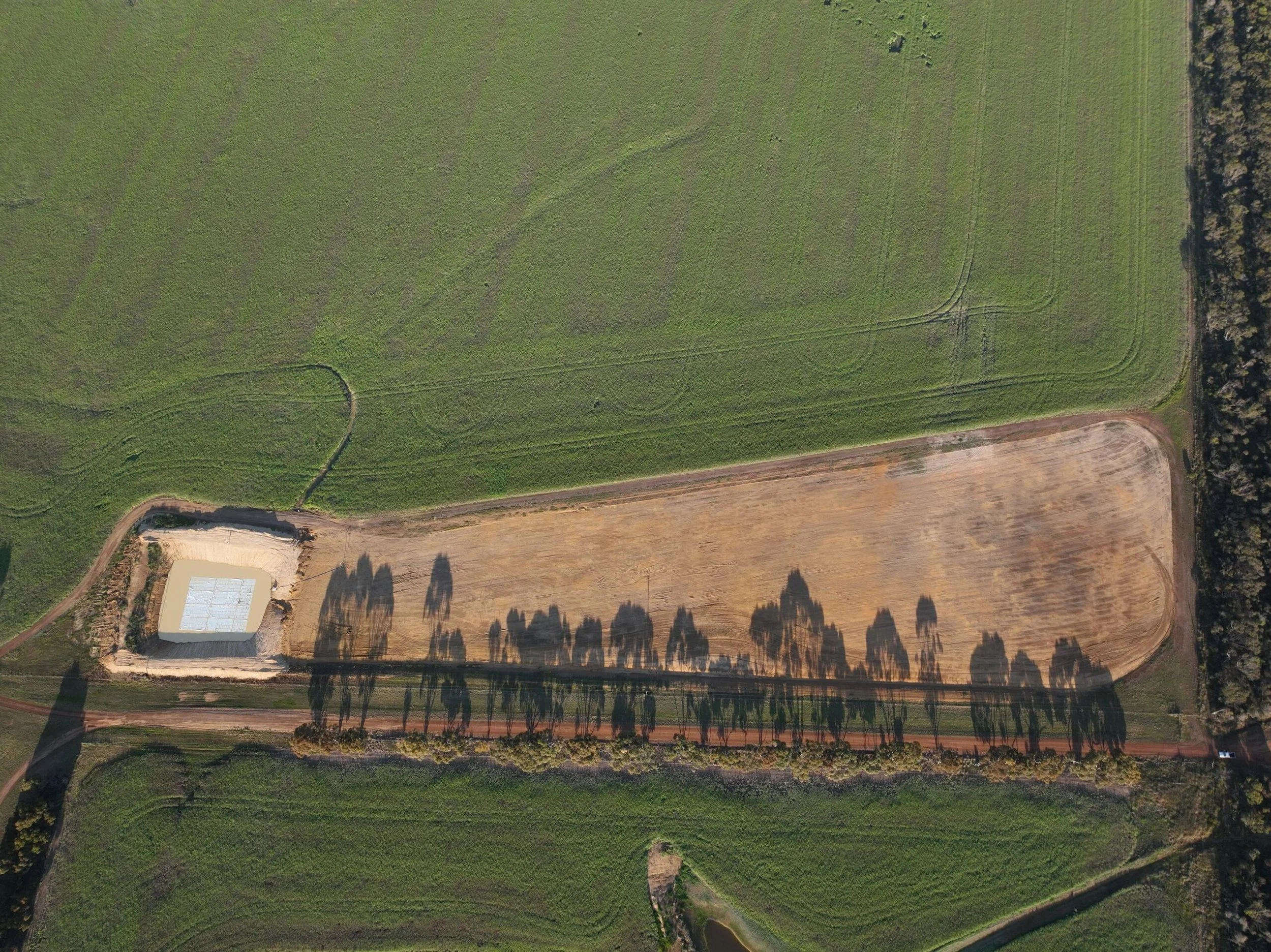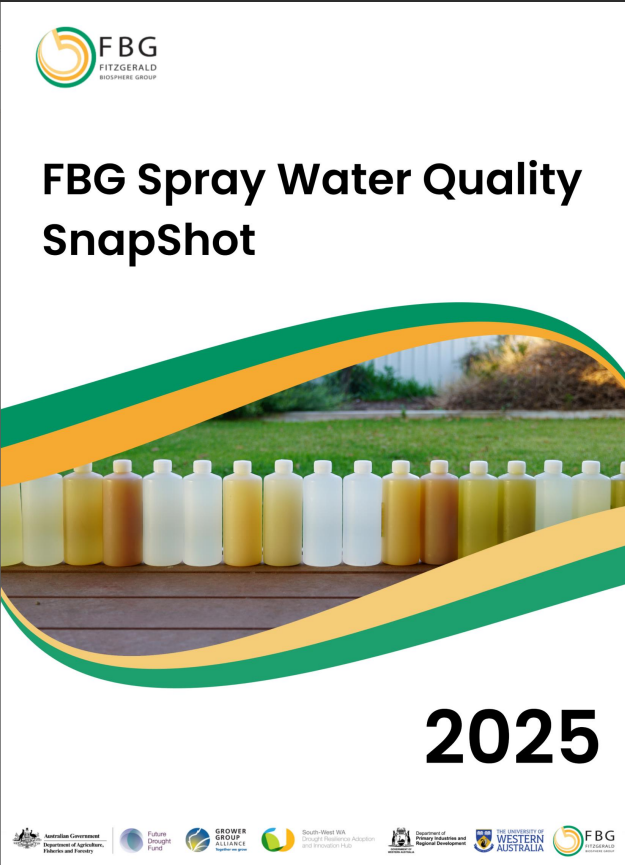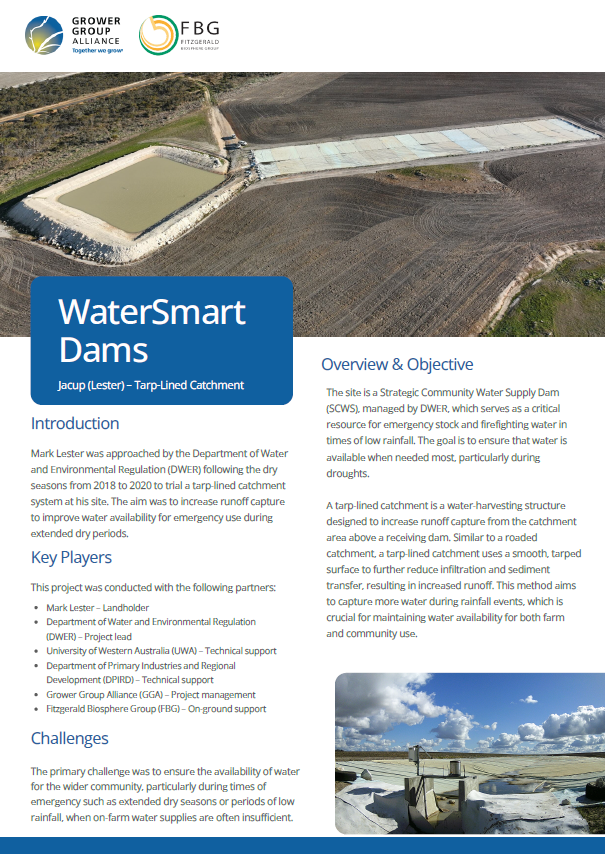
Case Studies
1. Test your water regularly, especially if you use sources other than rainwater or store it in concrete tanks for extended periods. pH and alkalinity can vary due to residual chlorination, and interactions with older or cement-based piping over long distances. Testing may still be needed if water is stored, blended with other sources, or used for sensitive spray applications.
2. Plan your spray program around water quality; use the most sensitive chemicals with your best water sources.
3. Check before treating or adding adjuvants. Some products are already formulated with the necessary components and may self-adjust.
4. Always read the product label. It is recommended to read the herbicide label to ensure the minimum water quality level is achieved, however, in many cases the herbicide labels do not state the minimum water quality threshold; in which case you should consult with your agronomist or use clean water only
Gairdner Improved Dam Design (Daisy Cover)
Located on the family’s farm in Gardiner, this key dam supports a range of essential uses for farm operations. To increase water yield, a roaded catchment was implemented, designed to boost runoff from its sloped surface and reduce permeability. Proper dam sizing was crucial to store the expected yield from the catchment, taking into account annual rainfall, evaporation, and loss. Evaporation is a major loss pathway for farm dams, but dam covers provide a solution, reducing evaporation while maintaining accessibility. Various types of covers are available as physical barriers to evaporation.
Jacup Tarp-lined Catchment
The site is a Strategic Community Water Supply Dam (SCWS), managed by DWER, which serves as a critical resource for emergency stock and firefighting water in times of low rainfall. The goal is to ensure that water is available when needed most, particularly during droughts.
A tarp-lined catchment is a water-harvesting structure designed to increase runoff capture from the catchment area above a receiving dam. Similar to a roaded catchment, a tarp-lined catchment uses a smooth, tarped surface to further reduce infiltration and sediment transfer, resulting in increased runoff. This method aims to capture more water during rainfall events, which is crucial for maintaining water availability for both farm and community use.



